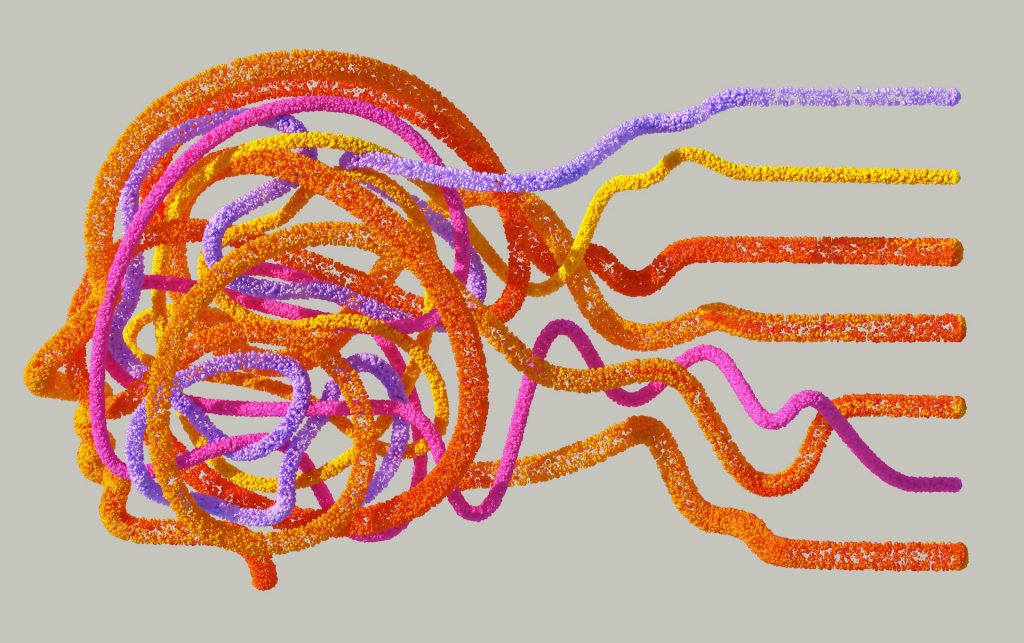This post is also available in Dutch.
This blog is part of this year’s summer series called Brain basics, in which we dive into the general functions and development of our brains.
Often when I tell people that I do research on language in the brain, they are a bit surprised. At school, language is mostly about spelling and texts. That’s why you tend to see language as something on paper, instead of something in your head. But producing and understanding language (no matter if it’s written language, spoken language, or sign language) is impossible without your brain. On the contrary: language is one of the crucial functions of the brain, just like memory, perception, and controlling your body. How language works in the brain is a complex question and many researchers in Nijmegen are conducting research into this, for example at the Donders Institute or the Max Planck Institute.
From meaning to light/sound and vice versa
Understanding and producing language is crucial in daily life. You could consider language production and language comprehension as the opposite of each other: when you produce spoken, written, or sign language, you go from a message in your head to sound waves/written symbols/hand movements, and when you understand language, you convert those sensory perceptions back into meaning. Exactly what steps are involved in this is a very important question to which we do not yet have a definitive answer. But in any case, as a listener of spoken language, you must convert the sound waves into language sounds (do you hear a B or a P?), recognize individual words from the continuous stream of sounds, link the words together to form a larger structure (such as a sentence), and understand what someone’s intention is: what is the other trying to communicate?
Language requires a whole network of brain areas
People sometimes talk about a gift for languages, but there is not one area in the brain that has such a gift. In fact, many different brain areas are involved in language, which are connected to each other and they together form brain networks. Here are some examples of the brain regions involved in language:
- You need your senses to perceive spoken, written, and sign language, and to pick up on lip movements, hand movements, and other meaningful body movements.
- You need memory areas in which all your language knowledge is stored: what does the word “potato” mean again? The hippocampus, an area in the middle of the brain in the shape of a seahorse, is involved in this.
- Linking different sensory information is very important for language: for example connecting separate sounds to form words, connecting words to form sentences, or linking the sound someone makes to the corresponding lip movements. For example, the left inferior frontal gyrus, also known as Broca’s area, is involved.
- In the case of language production, you need motor control to make the right sounds with your mouth (spoken language), to produce the right gestures with your body (sign language), or to write or type the letters with your hands (written language).
As you can see, there are many brain regions involved in language. Yet, we see that language is mainly processed in the left hemisphere in about 90% of people. Damage to these above-mentioned brain regions, for example, due to a stroke, can lead to the development of aphasia or other language disorders.
Language is difficult and you are extremely good at it
Now that you know how many steps and brain areas are needed to produce and understand language, you may also realize how special it is that people are so good at language. Even if you don’t always know whether to write “there” or “their”, you are still impressively good at language. Your brain can quickly convert sensations such as sound waves into meaning and vice versa and you can be thankful for that!
Want to learn more about the basics of your brain?
Then check out our other blogs in the Brain Basics summer series! We have already written about the anatomy of the brain, the different types of brain cells, the development of the brain as a baby and afterwards. We have also highlighted the important functions of the brain: moving your body, making decisions, memory and emotions, sensory perception, and automatic behavior such as breathing. With this series, you will become an expert on your own brain!
Credits
Author: Marlijn ter Bekke
Buddy: Maartje Koot
Editor: Wessel Hieselaar
Translation: Helena Olraun
Editor translation: Siddharth Chaturvedi
Featured image by Google Deepmind via Unsplash
